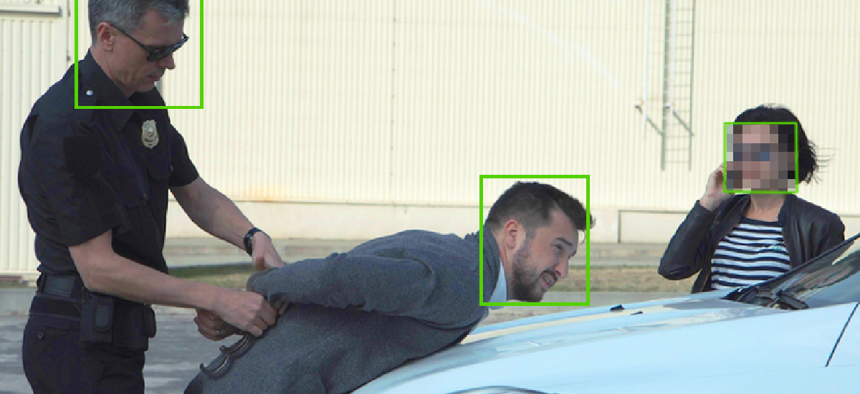AI-powered redaction software speeds release of police video


Connecting state and local government leaders
Police officers in Pemberton Township, N.J., now use cloud-based, artificial intelligence-powered software to quickly redact video from body-worn and in-car cameras.
Officers at the Pemberton Township, N.J., Police Department can use cloud-based, artificial intelligence-powered software to quickly redact video that body-worn and in-car cameras capture, saving time, increasing transparency and potentially helping to solve cases faster.
Although it has used in-car cameras since the mid-1990s, the department started issuing body-worn cameras in March. At the same time, it began using Veritone’s Redact application so that officers could remove personally identifiable information or faces from video before it was shared publicly.
“If we’re looking to get somebody identified [by the public], if we’re trying to put things out to social media or to our local media … [we wanted] a program where we could blur witnesses’ faces, blur third-party people that really were not involved in the incident, maybe license plates, various information,” Police Chief David Jantas said.
Officers can upload video to Veritone’s aiWARE platform, which uses CJIS-compliant Microsoft Azure, and use Redact. They run a head-detection engine against the video to quickly identify all the heads in the video, and then the officer can search and select which ones to redact and how to redact then, such as with a full blur or a pixilation.
Officers can also draw boxes around other identifying information such as a license plate or driver’s license and redact that, too.
The platform has more than 500 standardized models that can be applied to data ingested from multiple sources. “We have face-detection models, we have object-detection models, we have translation, transcription, geolocation, head detection … and we can put all those on the platform and apply them against that really broad set of data,” said Jon Gacek, head of government, legal and compliance at Veritone.
An hour of video can take up to 10 hours to redact by hand, Gacek said. Redact can save up to 90% of time compared to the manual process, depending on the number of faces or objects requiring redaction as well as on the quality of the video. At the end of the redaction process, the officers have both the original, untouched video and the redacted file, which they can leave in the cloud or download to a local PC.
Veritone is working on additional capabilities such as speech-to-text conversion that would allow automatic transcription of interviews with, for example, witnesses or suspects. Officers would then be able to redact keywords such as names, addresses and other personally identifiable information.
Jantas said that would be an additional benefit of the software because in his department, transcriptions are currently done manually, which is time-intensive.
“Officers today are very technologically in tune,” he said. “They understand the need for video and other systems that help us to do our jobs. They see this as another tool that will help us not only solve crimes, but also to engage the public.”
Still, one of the criteria Jantas used for choosing a redaction solution was ease of use.
“The people we’re having do this redaction are not IT people. They’re not computer whizzes or anything like that,” Jantas said. “They’re police officers, and we have them do it because they know what they’re looking at. They know what should be in a video product that we make available and what shouldn’t.”
The acquisition of the cameras and the software was possible because of funding in the township’s budget and a $75,000 grant from the Justice Department’s Bureau of Justice Assistance.
For Pemberton, the ability to share videos, whether they contain “nice to know” information or footage of suspects in a crime, is a boon to transparency.
“This ability to redact locally gives us a great tool” to quickly get video out the public, Jantas said.
NEXT STORY: California picks up LA’s mainframe workloads




